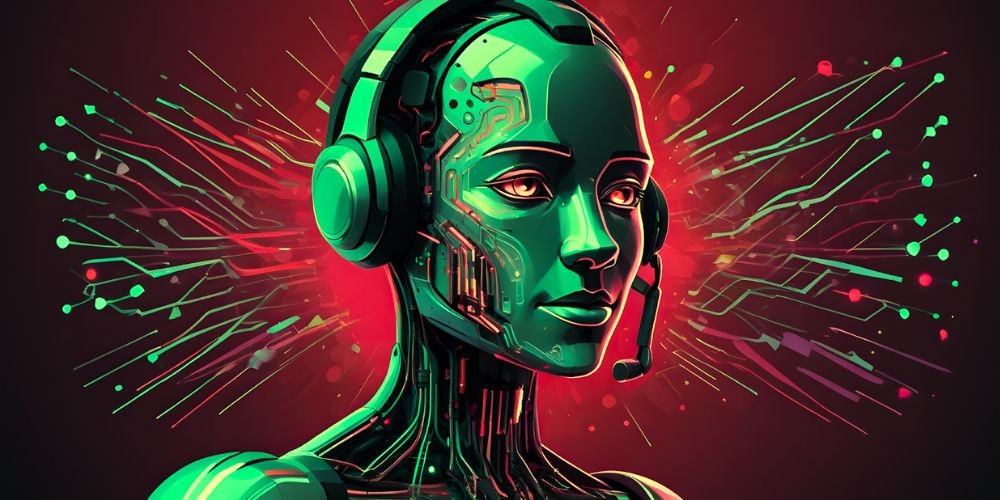Emotion recognition, a burgeoning field in artificial intelligence, aims to decode and understand human emotions from various modalities such as facial expressions, speech, and physiological signals. This article offers an in-depth exploration of emotion recognition, delving into its foundational principles, methodologies, applications, and prospects.
Understanding Emotion Recognition
Emotion recognition entails automatically detecting and interpreting human emotions using computational techniques. Machines infer emotional states by analyzing facial expressions, vocal intonations, and physiological signals, enabling personalized interactions and empathetic responses.
Facial Expression Analysis
Facial expression analysis is a cornerstone of emotion recognition, involving detecting and interpreting facial cues such as smiles, frowns, and eyebrow movements. Techniques like deep learning and computer vision enable machines to accurately identify subtle changes in facial expressions and infer underlying emotions.
Speech and Audio Analysis
Speech and audio analysis are crucial in emotion recognition, as vocal intonations and speech patterns convey emotional information. Machine learning algorithms extract acoustic features and linguistic cues from speech signals to infer emotions such as happiness, sadness, and anger, enhancing natural language understanding and sentiment analysis.
Physiological Signal Processing
Physiological signal processing involves analyzing physiological responses such as heart rate, skin conductance, and brain activity to infer emotional states. Biosensors and wearable devices measure physiological signals, providing valuable insights into an individual’s emotional arousal and affective states, particularly in healthcare and psychological research.
Methodologies in Emotion Recognition
Emotion recognition employs diverse methodologies and techniques to accurately interpret and classify emotional states across different modalities and contexts.
Machine Learning Models
Machine learning models, including deep neural networks, support vector machines (SVMs), and decision trees, are commonly used in emotion recognition. These models learn from labeled data to classify emotional states based on features extracted from facial expressions, speech, or physiological signals, enabling automated emotion detection and classification.
Multimodal Fusion Techniques
Multimodal fusion techniques integrate information from multiple modalities, such as facial expressions, speech, and physiological signals, to improve the accuracy and robustness of emotion recognition systems. Fusion strategies like early fusion, late fusion, and decision-level fusion combine complementary information sources, enhancing the overall performance of emotion recognition models.
Transfer Learning and Domain Adaptation
Transfer learning and domain adaptation techniques leverage knowledge from related tasks or domains to improve the performance of emotion recognition models on specific datasets or contexts. Pre-trained models and domain-specific adaptation strategies enable efficient learning from limited labeled data, facilitating the development of tailored emotion recognition solutions for diverse applications.
Applications of Emotion Recognition
Emotion recognition finds myriad applications across various industries and domains, influencing human-computer interaction, healthcare, marketing, and beyond.
Human-Computer Interaction
Emotion recognition enhances user experience in human-computer interaction by enabling systems to adapt and respond to users’ emotional states. Applications include affective computing, virtual assistants, and emotion-aware interfaces, which tailor interactions based on users’ emotional cues, fostering more engaging and personalized experiences.
Mental Health Monitoring
Emotion recognition technology aids mental health monitoring and assessment by analyzing facial expressions, speech patterns, and physiological signals to detect signs of stress, anxiety, or depression. Wearable devices and smartphone apps with emotion recognition capabilities offer valuable insights into individuals’ emotional well-being, facilitating early intervention and support.
Market Research and Advertising
In market research and advertising, emotion recognition techniques provide valuable insights into consumers’ emotional responses to products, advertisements, and brand experiences. By analyzing facial expressions, speech tonality, and physiological reactions, marketers gain a deeper understanding of consumer preferences and behavior, enabling more effective targeting and messaging strategies.
Future Directions of Emotion Recognition
The future of emotion recognition holds exciting possibilities, with technological advancements poised to enhance accuracy, adaptability, and ethical considerations.
Contextual and Cultural Sensitivity
Future research aims to develop emotion recognition models sensitive to cultural and contextual nuances, ensuring accurate interpretation and classification of emotions across diverse populations and settings. Considerations for cultural differences, individual differences, and situational contexts are essential for developing inclusive and ethically sound emotion recognition systems.
Real-Time and Continuous Monitoring
Advancements in wearable devices and sensor technologies enable real-time and continuous monitoring of emotional states in everyday life. Future developments focus on miniaturization, energy efficiency, and seamless integration of emotion recognition capabilities into wearable devices, empowering individuals to monitor and manage their emotional well-being proactively.
Ethical and Privacy Considerations
As emotion recognition technology becomes more pervasive, ethical and privacy considerations are paramount. Future research and development efforts prioritize transparency, consent, and data protection, ensuring that emotion recognition systems respect users’ autonomy, privacy, and dignity while delivering meaningful benefits and insights.
Conclusion
Emotion recognition technology holds tremendous potential to transform human-computer interaction, mental health monitoring, and marketing research. By leveraging methodologies such as facial expression analysis, speech and audio analysis, and physiological signal processing, emotion recognition systems decode the complexities of human emotions, enabling empathetic and personalized interactions. As research advances, emotion recognition is poised to play an increasingly significant role in enhancing our understanding of human emotions and facilitating more empathetic and responsive technology.





